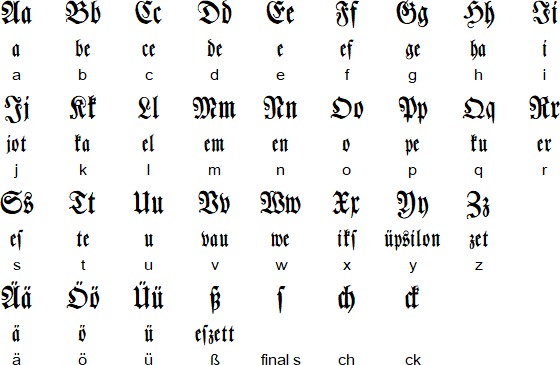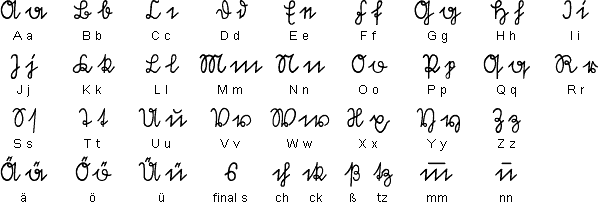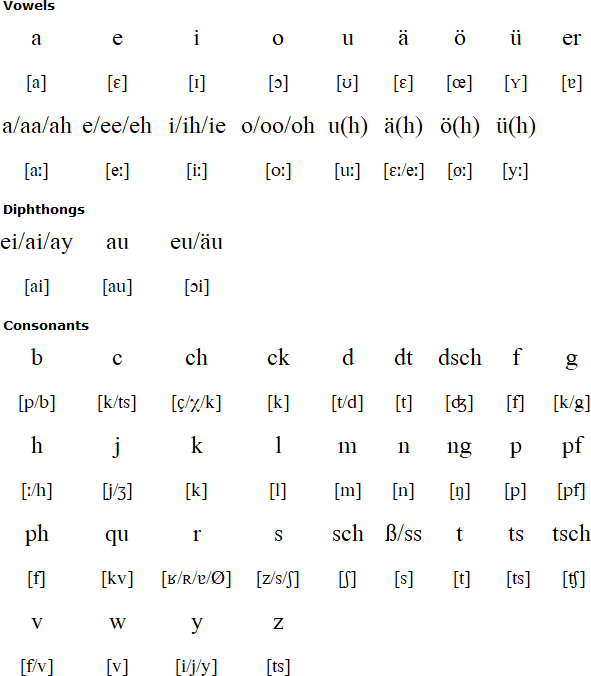Standard German (Hoch Deutsch) has around 90 million native speakers, and other varieties of German have some 30 million. There are about 80 million people who speak German as a second language, and many others study it as a foreign language.

German is a West Germanic language spoken mainly in Germany, Austria, Switzerland, Liechtenstein, Belgium, Luxembourg and Italy. It is recognised as a minority language in Czech Republic, Denmark, Hungary, Kazakhstan, Ukraine, Namibia, Poland, Romania, Russia, Slovakia, Slovenia, Croatia, Serbia, South Africa, Vatican City and Venezuela. There are also significant German-speaking communities in the USA, Canada, Brazil, Argentina, Mexico, Australia, South Africa, Chile, Paraguay, New Zealand and Peru.
Standard German (Hoch Deutsch) has around 90 million native speakers, and other varieties of German have some 30 million. There are about 80 million people who speak German as a second language, and many others study it as a foreign language.
The earliest known examples of written German date from the 8th century AD and consist of fragments of an epic poem, the Song of Hildebrand, magical charms and German glosses in Latin manuscripts. A short Latin-German dictionary, the Abrogans, was written during the 760s.
Native name: Deutsch [ˈdɔʏtʃ]
Linguistic affliation: Indo-European, Germanic, West Germanic, High German
Number of speakers: c. 200 million
Spoken in: Germany, Austria, Switzerland and Lichtenstein
First written: AD 760s
Writing system: Latin script
Status: official language in Germany, Austria, Switzerland, Italy (South Tyrol), Liechtenstein, Luxembourg, Belgium and the EU; recognised minority language in the Czech Republic, Denmark, Hungary, Kazakhstan, Ukraine, Namibia, Poland, Romania, Russia, Slovakia, Slovenia, Croatia, Serbia, South Africa, Vatican City and Venezuela.
German literature started to take off during the 12th and 13th centuries in the form of poems, epics and romances. Well known examples include the epicNibelungenlied (the Song of the Nibelungs) and Gottfried von Straßburg’s Tristan. The language used is now known as mittelhochdeutsche Dichtersprache (Middle High German poetic language). During this period Latin was gradually replaced by German as the language of official documents.
High German began to emerge as the standard literary language during the 16th century. Martin Luther’s translation of the Bible, which he completed in 1534, marks the beginning of this process. The language he used, based partly on spoken German, became the model for written German.
Fraktur was used for printed and written German from the 16th century until 1940. The name Fraktur comes from Latin and means “broken script”. It is so called because its ornamental twiddly bits (curlicues) break the continuous line of a word. In German it is usually called thedeutsche Schrift (German script).

The second lowercase s appears at the ends of syllables, except in the following combinations: ss, st, sp, sh and sch, while the first (ſ) appears everywhere else. The symbol ß (scharfes S orEszett) is a combination of the long s and z, or a combination of the two types of s: there is some dispute about origin of this symbol. For further details, see: http://en.wikipedia.org/wiki/ß

Sütterlin was created by the Berlin graphic artist L. Sütterlin (1865-1917), who modelled it on the style of handwriting used in the old German Chancery. It was taught in German schools from 1915 to 1941 and is still used by the older generation.


Modern German alphabet
| A a | B b | C c | D d | E e | F f | G g | H h | I i | J j | K k | L l | M m |
|---|---|---|---|---|---|---|---|---|---|---|---|---|
| a | be | ce | de | e | ef | ge | ha | i | jot | ka | el | em |
| N n | O o | P p | Q q | R r | S s | T t | U u | V v | W w | X x | Y y | Z z |
| en | o | pe | ku | er | es | te | u | vau | we | iks | üpsilon | zet |

Copyright © 2017 Videsh Consultz. All rights reserved.